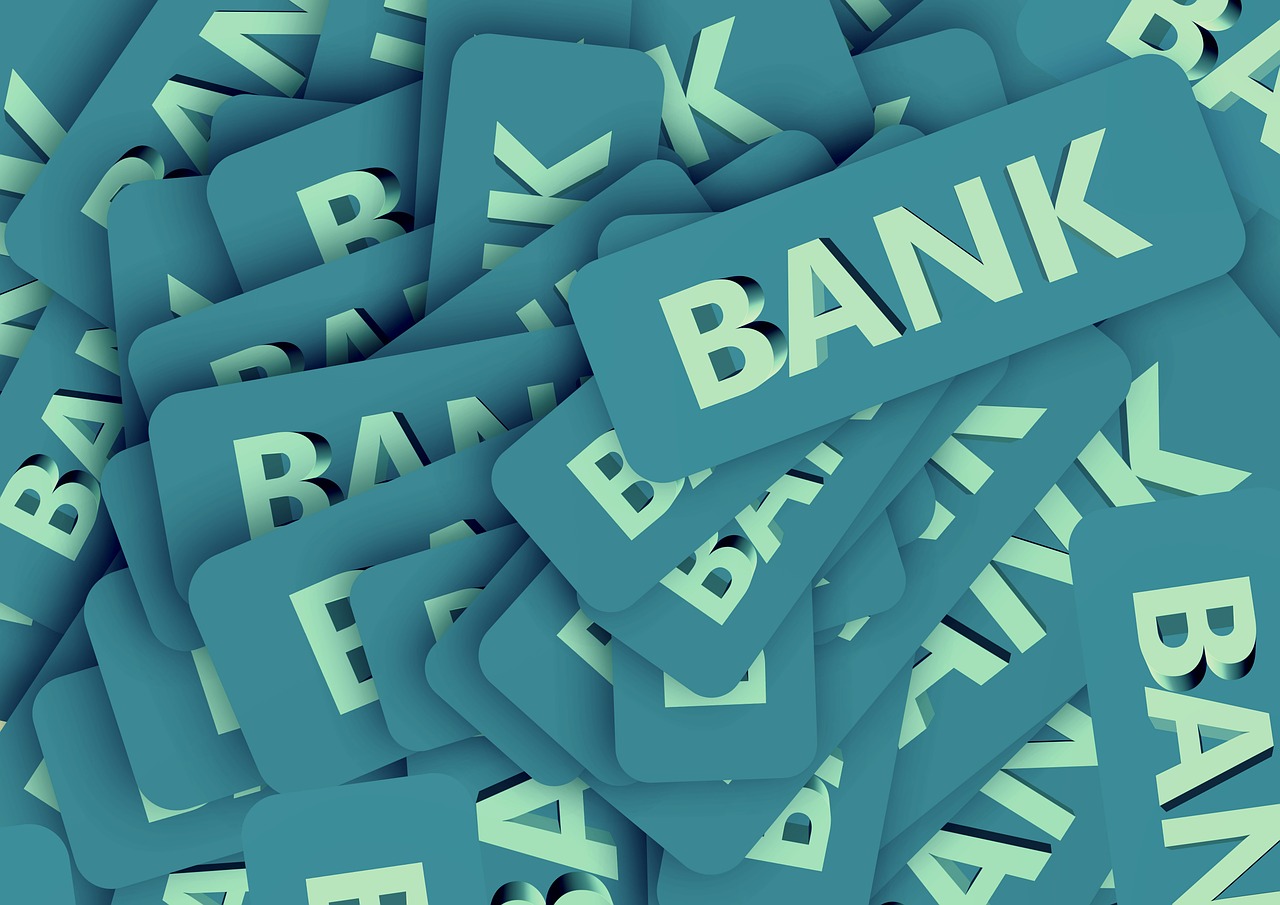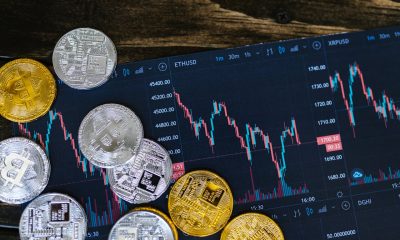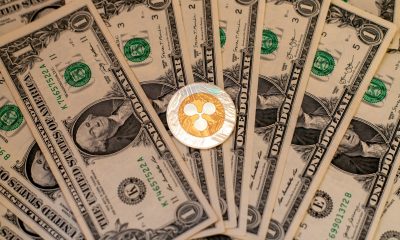Business
What is Really Bugging the Banks
Do you want to know what is really plaguing the entire banking system? A plethora of high-risk loans was made when money was virtually free during 10 of the last 14 years. This secular system of free money led to a 40-year-high rate of inflation. CPI at over 4x the Fed’s target compelled Mr. Powell to jack up interest rates by over 500 bps in just over one year.

At his May FOMC press conference, Mr. Powell tried his hand at stand-up comedy by saying “Banking conditions have broadly improved since March.” Could it really be possible that he can be so blind to what is actually happening within the banking system?
A banking system can only function properly when certain parameters are in place. Banks need to pay depositors a rate that is close to what they can receive from short-term Treasuries and that interest rate should also be above the rate of inflation. Most importantly, the rate paid on banks’ liabilities (deposits) needs to be below the rate it receives on its assets (loans). A steep yield curve, where short-term rates are several hundred basis points below long-term rates, is conducive for a healthy banking system to exist.
Banks are now paying depositors far below what they can receive from a risk-free, short-term Treasury Bill
In this scenario, deposits are sticky because there is no motivation to leave the banking system for the relative safety of T-bills; and banks can easily turn a profit due to the positive-sloping yield curve. The situation we have today is the exact opposite. Banks are now paying depositors far below what they can receive from a risk-free, short-term Treasury Bill and that rate is nowhere near the increase in the Consumer Price Index. The risk of bank runs increases when the deposit rate cannot compete with that of inflation and the rate offered on T-bills. It just does not make any financial sense at all to keep your money in a place where the risk is greater, and the reward is far less.
Case in point, the FDIC placed First Republic Bank (FRB) on Receivership last Friday. It is the 4th such bank since early March to fail. The list so far is Silvegate Bank, First Republic Bank, Silicon Valley Bank, and Signature Bank. These are not all insignificant financial institutions. Excluding Silvergate, they were the 2nd, 3rd, and 4th largest bank failures in history. The deposits and assets of the erstwhile FRB bank were sold to none other than Jamie Dimon’s JP Morgan (JPM). Of course, the shareholders get wiped out; but JPM gets their assets for dimes on the dollar, and the deal comes with a government backstop on potential losses as an added incentive.
Bank assets, and the income stream they provide, are worth far less than T-bills
I’m sure there’s nothing to see here, though; these collapses are just aberrations. So, just buy, buy, buy stocks. But please indulge me while I inject some reality into the evaluation. Do you want to know what is really plaguing the entire banking system? It is actually very easy to understand once you open your mind to the simple truth. A plethora of high-risk loans were made when money was virtually free during 10 of the last 14 years. This secular system of free money led to a 40-year-high rate of inflation. CPI at over 4x the Fed’s target compelled Mr. Powell to jack up interest rates by over 500 bps in just over one year. Hence, bank assets, and the income stream they provide, are worth far less than T-bills.
For example, one of a bank’s largest assets is mortgages. The Fed pushed the overnight interbank lending rate to the floor and bought $2.6 trillion in mortgage-backed securities to push the cost of buying a home to a record low. In fact, the 30-year fixed mortgage rate was below 3% from July of 2020 thru March of 2021. Rates even plunged to a record low of 2.65% by early 2021. And, 30-year Fixed rate mortgages have been below the current Effective Fed Funds Rate (EFFR), which is now just over 5%, since May of 2010. This was not an issue for banks as long as inflation remained quiescent, and both the EFFR and T-bill rates were near zero percent. But that all changed when the CPI soared to 9% by the summer of 2022, and the risk-free rate on short-term government debt climbed to match that of the Fed Fund’s target rate of 5-5.25%.
The problem is banks cannot pay depositors anything close to what they can now receive from a risk-free T-bill yield
Otherwise, they would be paying depositors more than they are currently receiving from a good percentage of their assets, and their profit margins would disappear. However, if banks don’t begin offering much better rates to their customers’ liquid deposits, it will lead to more money fleeing the banking system, which is a drain on reserves and curbs banks’ ability to lend. This exacerbates the drain on reserves already occurring from the Fed’s ongoing QT program. Banks are then forced to sell assets to meet liquidity requirements, which then puts further downward price pressure on these same assets and attenuates banking reserves further.
Thus, expediting and intensifying the recession that is already in progress. In the end, the size of the bank is irrelevant. All banks suffer under this same dynamic—even the bigger ones—just to different degrees. Banks have already significantly tightened lending standards. And now, they will be forced to tighten lending practices even further due to the escalating deposit flight and increased regulatory oversight. Of course, mortgages are not the only loans made to consumers and businesses during the Fed’s ZIRP regime that would face margin pressure if banks deigned to pay depositors a rate that is even close to what they can receive from T-bills. Net interest margins would shrink across the board.
The deep state of Wall Street is desperately trying to convince investors that the current array of banking failures is idiosyncratic and isolated. That is the new definition of insanity. Think about it…what do you think will happen to banks’ assets when the unemployment rate begins to rise? Or, how much damage will be done to the commercial mortgage-backed securities market when the $2.5 trillion worth of “vacant” commercial real estate loans have to be refinanced? How about the Trillion-dollars’ worth of collateralized loan obligations that will falter as the economy begins to contract?
The KRE regional bank ETF is down over 40% since February 7th of this year
In other words, we have yet to see the recession become manifest, which is so very clearly predicted by the National Federation of Independent Business’ small business survey, the Index of Leading Economic Indicators, plunging money supply growth rates, the soaring net percentage of banks that are tightening lending standards, and inverted yield curves. The Fed’s additional 25bp rate hike after the May FOMC meeting will serve to exacerbate and expedite the coming recession. And, once that economic contraction finally does arrive, we can expect the stress in the banking system to greatly intensify. The mainstream financial media is ignorant of this fact, but the regional banking index is not. The KRE regional bank ETF is down over 40% since February 7th of this year.
Sorry, Mr. Powell, the trouble in the banking system has only just begun. Investors would be wise to stay extremely defensive with their asset allocations until the Fed and Treasury are able to adequately re-liquify the financial system. But let’s see them try doing that without causing inflation to run intractable.
__
(Featured image by geralt via Pixabay)
DISCLAIMER: This article was written by a third party contributor and does not reflect the opinion of Born2Invest, its management, staff or its associates. Please review our disclaimer for more information.
This article may include forward-looking statements. These forward-looking statements generally are identified by the words “believe,” “project,” “estimate,” “become,” “plan,” “will,” and similar expressions. These forward-looking statements involve known and unknown risks as well as uncertainties, including those discussed in the following cautionary statements and elsewhere in this article and on this site. Although the Company may believe that its expectations are based on reasonable assumptions, the actual results that the Company may achieve may differ materially from any forward-looking statements, which reflect the opinions of the management of the Company only as of the date hereof. Additionally, please make sure to read these important disclosures.

-

 Crypto6 days ago
Crypto6 days agoHyperliquid Proposes Burning $1B in HYPE to Make Supply Deflationary
-

 Fintech2 weeks ago
Fintech2 weeks agoArgentina’s Banks Poised to Integrate Cryptocurrencies, Paving Way for Widespread Adoption
-

 Crypto2 days ago
Crypto2 days agoRipple in 2025: Legal Victory, RLUSD Growth, and XRP’s Uncertain Future
-

 Crypto1 week ago
Crypto1 week agoCrypto Markets Slide as Bitcoin Breaks $90K, Year-End Pessimism Grows
























